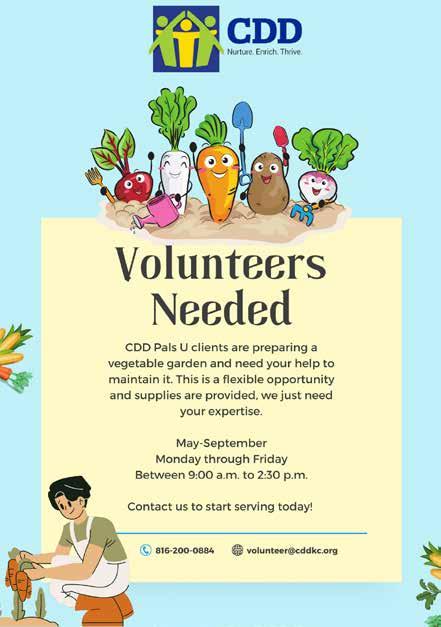
2 minute read
GARDEN CALENDAR
July list of what to do in the garden.
TURF
• Mow bluegrass and tall fescue at 3 to 3 1/2 inches.
• Mow Zoysia at 1 1/2 inches.
• Fertilize Zoysia to encourage summer growth with a high-nitrogen fertilizer.
• Let grass clippings fall to return nutrients to the soil.
• Look for summer diseases such as brown patches; treat as needed.
• Sharpen mower blades for a clean cut.
• Replace the lawn mower air filter and change the lawn mower oil per owner’s manual.
• Prepare to control perennial grassy weeds such as crabgrass, fescue, and nimblewill.
• Take a soil test to prepare for fall lawn renovation.
• Water deeply and less often for deep roots and a healthy lawn.
Flowers
• Remove faded flowers from annuals to stimulate more buds for late summer color.
• Deadhead perennials to prevent seeding and encourage plant growth.
• Replenish mulch layers; 2 to 3 inches deep is ideal.
• Cut fresh bouquets for enjoyment.
• Lightly fertilize annuals monthly for best flowering.
• Dig, divide, and replant crowded irises.
• Dig, divide, and replant daylilies.
• Fertilize roses for fall blossoms.
• Fertilize and water container gardens.
• Complete the final pinching of chrysanthemum tips for bushier plants.

Trees And Shrubs
• Water newly planted shrubs and young trees (planted within the last three to five years) during dry weather.
• Keep plants mulched to conserve moisture and cool roots.
• Remove sucker growth from the base of trees and along branches.
• Prune diseased, dead, or hazardous limbs.
Vegetables And Fruits
• Harvest fruits of your labor and enjoy.
• Control weeds’ growth to preserve water and nutrients.
MY GARDEN (Use this space to list additional tasks to accomplish in your garden.)
•
•
•
•
• Fertilize vegetables to encourage plant development.
• Watch for foliar disease development on lower tomato leaves and treat with a fungicide.
• Prepare for fall gardening. Plant potatoes, broccoli, and other fall crops.
• Spray sweet corn to control corn earworms as silks emerge.
• Be on the lookout for pests in the garden and control.
• Remove old raspberry canes after harvest.
Miscellaneous
• Keep compost pile moist for fast processing and turn occasionally.
• Take photographs of the garden to document success and for future planning.
Johnson County K-State Research and Extension recommends environmentally-friendly gardening practices. This starts by identifying and monitoring problems. Cultural practices and controls are the best approach for a healthy garden. If needed, use physical, biological or chemical controls. Always consider the least toxic approach first. Dennis Patton is the horticulture agent for Johnson County K-State Research and Extension. For free information fact sheets, visit www.johnson.ksu.edu, or call the Extension office at 913-715-7000.
Garden beds are located at CDD Administrative building 9150 East 41st Terrace, Kansas City, MO back of the building by PALS University
If you are interested in helping, send an email to volunteer@cddkc.org, and mention garden beds.








